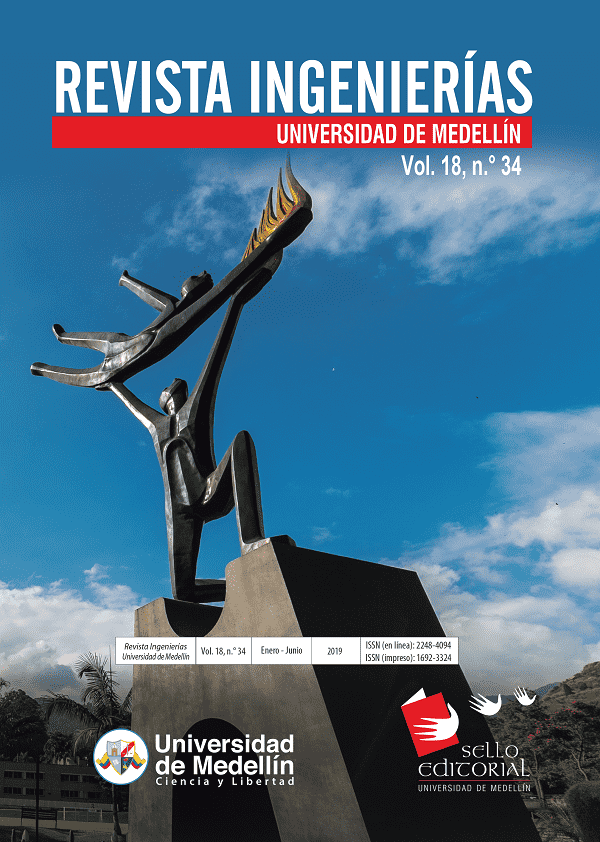Web portals for information management and enhancement of the co-creational experience
Main Article Content
Abstract
Multiple strategies for a more open innovation have been put into place looking for a conjunct generation of value among different actors through the co-creation of experiences. Some are face-to-face techniques in which participants have to be focused in the same space-time scenario, while other use social media and web portals because of their potential for facilitating collaboration and co-creation naturally while also providing specialized tools according to the particular requirements of s project. This research shows a framework for the selection of a web portal for co-creation, facilitating thus the choice for the more suitable portal for a virtual open innovation process with clear criteria. On one hand, some preliminary results highlight that the adequate choice of the interaction tool in a process of open innovation is decisive for the success of the process. On the other internet is ratified (specifically, tools like business innovation portals) is an enhancer for the interchange of information because it facilitates the interaction among participants geographically scattered while at the same time offers the opportunity of asynchronous collaboration. With this feature time and space as face-to-face limitants are eliminated.
Article Details
References
[1] J. Eckhardt et al., 'Open innovation, information, and entrepreneurship within platform ecosystems,' Strategic Entrepreneurship Journal, vol. 12, pp. 369-391, 2018.
[2] OECD y Eurostat, Oslo Manual 2018: Guidelines for Collecting, Reporting and Using Data on Innovation, 4.a ed., Luxemburgo: OECD Publishing, 2018, 258 p.
[3] H. Chesbrough, Open innovation: The new imperative for creating and profiting from technology, Boston:Harvard Business School Press, 2006, 278 p.
[4] A. Samad et al., Hands-On Knowledge Co-Creation and Sharing: Practical Methods and Tecniques. Stuttgart: KnowledgeBoard, 2007, 584 p.
[5] L. González et al., 'Method of interaction in open innovation processes incorporating ubiquitous environments and web 2.0 social networks: A baseline architecture,' presentado en 8th Iberian Conference on Information Systems and Technologies (CISTI), Lisboa, 2013.
[6] J. Rowley et al., 'Customer community and co-creation: a case study,' Marketing Intelligence and Planning, vol. 25, pp. 136-146, 2007.
[7] M. Colombo et al., 'Open innovation and within-industry diversification in small and medium enterprises: The case of open source software firms,' Research Policy, vol. 43, n.° 5, pp. 891-902, 2016.
[8] J. Perry-Smith y P. Mannucci, 'From creativity to innovation: The social network drivers of the four phases of the idea journey,' Academy of Management Review, vol. 42, n.°1, pp. 53-79, 2017.
[9] N. Oostervink et al., 'Knowledge sharing on enterprise social media: Practices to cope with institutional complexity,' Journal of Computerâ€Mediated Communication, vol. 21, n.° 2, pp. 156-176, 2016.
[10] M. Allen, 'Web 2.0: An argument against convergence,' Media Convergence and Deconvergence, vol. 30, n.° 3, pp. 177-196, 2017.
[11] S. Lim, A. Finkelstein, 'StakeRare: using social networks and collaborative filtering for large-scale requirements elicitation,' IEEE transactions on software engineering, vol. 38, n.° 3, pp. 707-735, 2012.
[12] Päivi, H. and Antikainen, M. J., 'Co-creating a digital service for small business owners’ finance management,' Journal of Innovation Management, 3, n.° 3, pp. 57-70, 2015.
[13] L. González et al., 'Proposal of a model of innovation process with focus in co-creation,' en Innovative ways of knowledge representation and management, C. Zapata y G. González, eds., pp. 165-178, Medellín: Sello Editorial Universidad de Medellín, 2012.





